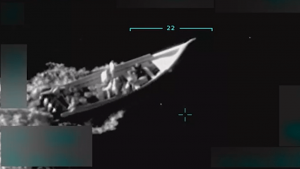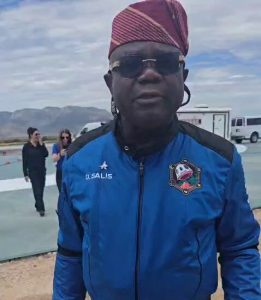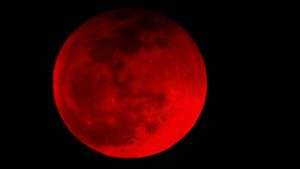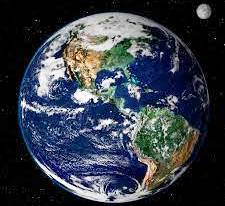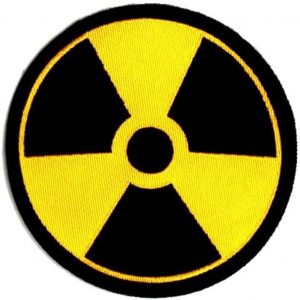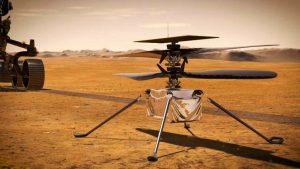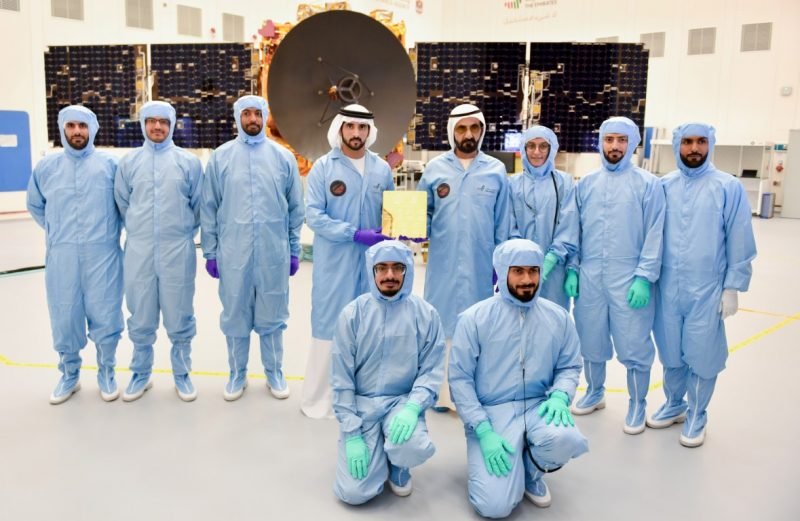
This also makes UAE the third country/entity to do so on first attempt and fifth entity to ever reach the red planet after USA’s NASA, Russia, European Space Agency (ESA) and India.
The first entity to reach Mars on first attempt is ESA with the Mars Express/Beagle 2 lander which was launched on 2 June, 2003 and arrived 25 December, same year.
The second is India’s Mass Orbiter Mission, launched on 6 November, 2013 and entered Martian orbit on 24 September, 2014.
Russia, USA, Japan and China did not succeed at first attempt.
UAE’s Deputy Supreme Commander and Crown Prince of Abu Dhabi, Sheikh Mohamed Bin Zayed, said the “Emirati people’s happiness is indescribable.”

Launched with the H-IIA rocket from the Tanageshima Space Centre, Japan, on 19 July, 2020, Hope travelled 493.5 million kilometres (306 million miles) before getting to Mars.
It approached Mars at 75,185 miles per hour and the Ground Station had to fire its boosters for 30 minutes to slow it down to 11,184 miles per hour so that it can gently enter and remain in Martian orbit.
If not, the gravity of Mars would have slingshot it into deep space. At least 60% of failed expeditions were at this stage.
The first entity to successfully reach Mars and it was after one failed attempt is NASA with its Mariner 4 launched on 28 November, 1964. It made a Mars flyby on 4 July,1965 and sent 21 photographs to show for it.
After that, Mariner 6 and Mariner 7 similarly made Martian flyby while Mariner 8 suffered a launch failure.
It was however, the Mariner 9 launched on 30 May, 1971 that was the first spacecraft to enter Martian orbit on November 13, 1971. It returned a total of 7,329 images in its mission which ended in October, 1972.
The second, after nine failed attempts, is Russia with the Mars 2 Orbiter launched on 19 May,1971 and entered Martian orbit on November 2, same year.
The first space probe to land on the soil of Mars (successfully and do work) is NASA’s Viking 1 Lander released by the Orbiter on 20 June, 1976 after entering Martian orbit a day earlier. The Viking 1 was launched on 20 August, 1975.
By the end of February, 2021 at least 50% of all 49 missions ever made to Mars failed.
The total cost of the Hope project was 200 million US dollars. If Hope had failed and with all that money lost, it would have been a big blow to not just UAE, but to all so-called developing countries in the world.
With three instruments on board, Hope will collect, what is considered, the most elaborate data so far from the atmosphere in Mars.
The Head, UAE’s Space Agency and mother of two, Sarah Al Miri, says the data collected will be shared freely with 200 institutions which have already expressed interest. Possibilities, therefore exist, for African countries to benefit from collaborative research work in advanced space science from any of them that makes a breakthrough.

The United Arab Emirates has picked 27-year-old Nora Al Matrooshi, who is now poised to become the country’s and Arab world’s first female astronaut.
She was selected with Mohammed Al Mulla from 4,305 applicants; 1,400 of whom are female.

They will proceed to NASA’s Johnson Space Centre in Houston, Texas, towards the end of this year for training.
UAE already has two trained astronauts: Hazza Al Mansouri and Sultan Al Neyadi.
Hazza Al Mansouri made history as the first Emirati to travel to space in September, 2019

when he spent eight days in the International Space Station, ISS.
The first Muslim in space is Saudi’s Prince Sultan bin Salman with the shuttle Discovery in 1985.
Nora Al Matrooshi’s selection to be an astronaut is highly welcome by gender activists because of what is widely perceived as a huge gender imbalance in space exploration.
By 2020, out of the 550 astronauts who have travelled to space, only 65 are woman.
pictures courtesy: uae space
RELATED POST: UAE PLANS LUNAR ROVER FOR 2024

The United Arab Emirates has announced plans for a lunar rover project which will land on the Moon by 2024.
The four-wheel rover named Rashid, 54 cm (21 inches) in length and width and 76 cm (30 inches) high; weighing a mere 10 kg (22 lbs) will be the lightest ever to land on the Moon.
China’s Yutu rovers weighing 140 kg (310 lbs) which landed on the Moon in 2013 and 2019 were the lightest.
India’s Chandrayaan-2 crash-landed on the Moon in 2019.
Only US, Russia and China have successfully landed a spacecraft on the Moon.
The UAE will be the 4th, and the first in the Arab world, if Rashid succeeds.
Rashid will carry six scientific instruments to study thermal properties of the lunar surface and the soil in a far side of the Moon, yet to be studied in previous expeditions.
Temperatures can vary from -200 oC (-328 oF) at night to 80 oC (176 oF) by day in the Moon.
Experts doubt how long Rashid can last in such extreme conditions considering its small size.
UAE scientists however, say they expect Rashid to work for one lunar day but will be excited if it lasts longer.
One lunar day is equivalent to 14 Earth days.

